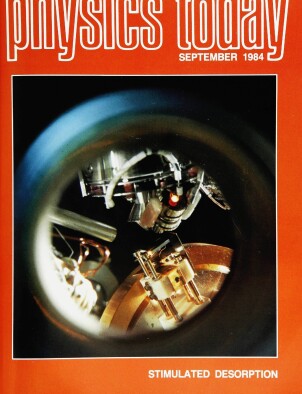Thermodynamics in finite time
DOI: 10.1063/1.2916405
Until the 19th century, technology was essentially the domain of skilled artisans and constructors who relied on practical experience to design and build their machines. One of the first efforts to use physical theory to study the functioning of machines was undertaken by the French engineer Sadi Carnot. Motivated by the concern of the French about the superiority of British steam engines, he undertook a systematic study of the physical processes governing steam engines, resulting in his remarkable paper Reflexions sur la puissance motrice du feu (On the Motive Power of Heat) published in 1826. Among the earliest successes of this new science, thermodynamics, was the formulation of criteria describing how well real processes perform in comparison with an ideal model. Carnot showed that any engine, using heat from a hot reservoir at temperature
This article is only available in PDF format
References
1. M. Mozurkewich, R. S. Berry, Proc. Nat. Acad. Sci. 78, 1986 (1981);
M. Mozurkewich, R. S. Berry, J. Appl. Phys. 53, 34 (1982).https://doi.org/JAPIAU2. J. Wheatley, T. Hofler, G. W. Swift, A. Migliori, Phys. Rev. Lett. 50, 499 (1983).https://doi.org/PRLTAO
3. For a more theoretical review of many of the topics covered in this article, see B. Andresen, R. S. Berry, M. J. Ondrechen, P. Salamon, “Thermodynamics for Processes in Finite Time,” Acc. Chem. Res., in press.
4. P. Salamon, A. Nitzan, B. Andresen, R. S. Berry, Phys. Rev. A 21, 2115 (1980).https://doi.org/PLRAAN
5. P. Salamon, B. Andresen, R. S. Berry, Phys. Rev. A 15, 2094 (1977).https://doi.org/PLRAAN
6. J. Geusic, E. O. Schulz‐DuBois, H. E. D. Scovil, Phys. Rev. 156, 343 (1967).
7. F. Schlögl, Z. Phys. 191, 81 (1966); https://doi.org/ZEPYAA
F. Schlögl, Z. Phys. 198, 559 (1967). https://doi.org/ZEPYAA
I. Procaccia, R. D. Levine, J. Chem. Phys. 65, 3357 (1976).https://doi.org/JCPSA68. B. Andresen, P. Salamon, R. S. Berry, J. Chem. Phys. 66, 1571 (1977).https://doi.org/JCPSA6
9. F. L. Curzon, B. Ahlborn, Am. J. Phys. 43, 22 (1975).https://doi.org/AJPIAS
10. P. Salamon, A. Nitzan, J. Chem. Phys. 74, 3546 (1981).https://doi.org/JCPSA6
11. P. Salamon, Y. B. Band, O. Kafri, J. Appl. Phys. 53, 197 (1982).https://doi.org/JAPIAU
12. B. Andresen, M. H. Rubin, R. S. Berry, J. Phys. Chem. 82, 2704 (1983).https://doi.org/JPCHAX
13. P. Salamon, R. S. Berry, Phys. Rev. Lett. 51, 1127 (1983).https://doi.org/PRLTAO
14. F. Weinhold, J. Chem. Phys. 63, 2479 (1975); https://doi.org/JCPSA6
F. Weinhold, J. Chem. Phys. 65, 559 (1976).https://doi.org/JCPSA615. M. H. Rubin, Phys. Rev. A 19, 1272, 1277 (1979).https://doi.org/PLRAAN
16. M. H. Rubin, Phys. Rev. A 22, 1741 (1980).
17. M. J. Ondrechen, B. Andresen, M. Mozurkewich, R. S. Berry, Am. J. Phys. 49, 681 (1981).https://doi.org/AJPIAS
18. Y. B. Band, O. Kafri, and P. Salamon, J. Appl. Phys. 52, 3745 (1981).https://doi.org/JAPIAU
19. M. J. Ondrechen, R. S. Berry, B. Andresen, J. Chem. Phys. 72, 5118 (1980); https://doi.org/JCPSA6
M. J. Ondrechen, B. Andresen, R. S. Berry, J. Chem. Phys. 73, 5838 (1980).https://doi.org/JCPSA6
More about the Authors
Bjarne Andresen. University of Copenhagen, Denmark.
Peter Salamon. San Diego State University.
R. Stephen Berry. University of Chicago.




